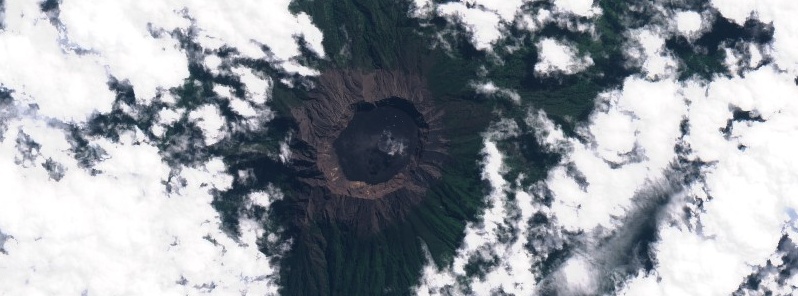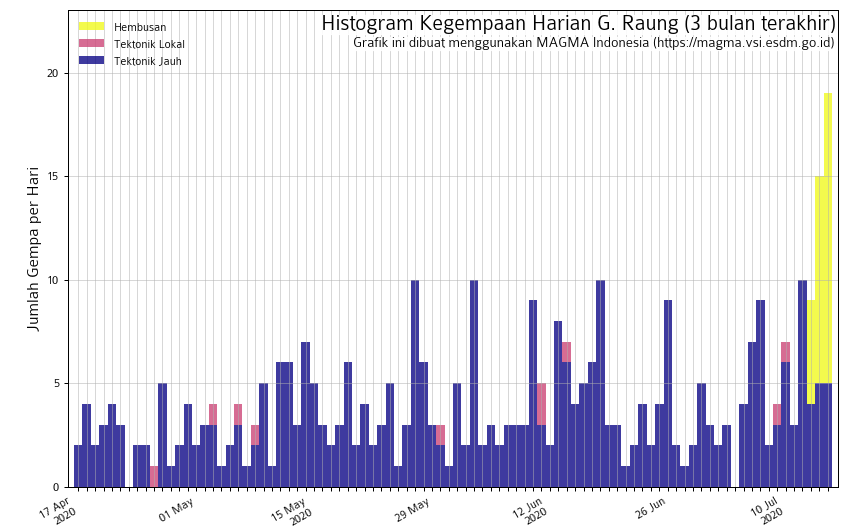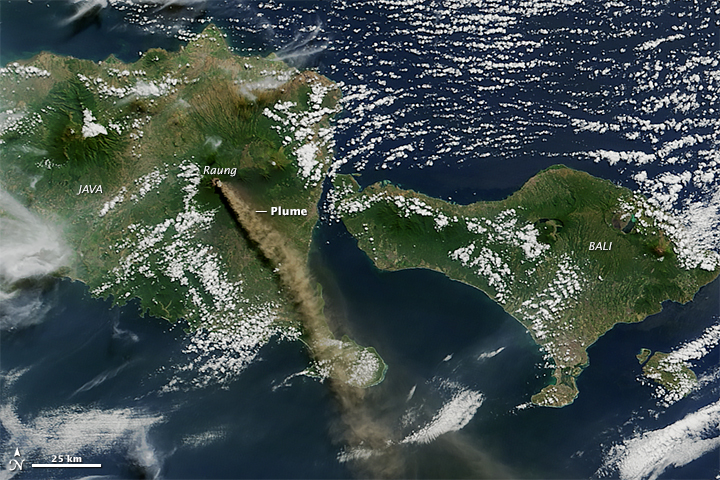New eruption at Raung volcano, first since 2015, Indonesia

A new eruption occurred at the Indonesian Raung volcano at 06:53 UTC (13:53 local time) on July 16, 2020. This is the first reported eruption of this volcano since its last eruptive phase ended in August 2015.
According to Raung Volcano Observatory VONA issued 07:45 UTC, the eruption was recorded on seismogram with a maximum amplitude of 10 mm and a duration of 56 seconds.
The best estimate of ash-cloud top is around 3 432 m (10 982 feet) above sea level but may be higher than what can be observed clearly. The ash height data was supplied by ground observers. Ash-cloud moved to the north.
The Aviation Color Code was raised to Orange.
A new VONA (Volcano Observatory Notice for Aviation) was issued at 08:49 UTC, noting that ash emissions continue.
According to the Darwin VAAC advisory released at 08:30 UTC, volcanic ash is unidentifiable on satellite imagery due to meteorological clouds.

The last eruptive phase of this volcano took place from February 1 to August 22, 2015 — Volcanic Explosivity Index (VEI) 3. Ash and lava emissions started after several weeks of tectonic rumblings beneath the surface.
At least 900 airplane flights into and out of Bali and other regional airports were canceled due to concerns about the ash clouds, which rose up to 6 km (20 000 feet) a.s.l. from July 15 – 21 and drifted as far as 340 km (211 miles) in multiple directions.
On July 16, BNPB reported that a dense gray-to-black ash plume rose as high as 2 km (6 560 feet) above the crater rim and drifted WNW. Incandescent lava at the summit was visible and tremor was continuous. Roaring and thumping sounds were reported by residents. Ashfall was reported in areas downwind, including Cumedak (19 km / 11.8 miles W) and Sumberjambe (13 km / 8 miles NW).

Ash rising from Raung volcano on July 12, 2015. Credit: NASA Aqua/MODIS

The volcano has one confirmed VEI 5 eruption in 1593 and one VEI 4 in 1638.
Geological summary
Raung, one of Java's most active volcanoes, is a massive stratovolcano in easternmost Java that was constructed SW of the rim of Ijen caldera. The unvegetated summit is truncated by a dramatic steep-walled, 2 km (1.2 miles) wide caldera that has been the site of frequent historical eruptions.
A prehistoric collapse of Gunung Gadung on the W flank produced a large debris avalanche that traveled 79 km (49 miles), reaching nearly to the Indian Ocean. Raung contains several centers constructed along a NE-SW line, with Gunung Suket and Gunung Gadung stratovolcanoes being located to the NE and W, respectively. (GVP)
Featured image: Raung volcano on July 14, 2020. Credit: Copernicus EU/Sentinel-2

Commenting rules and guidelines
We value the thoughts and opinions of our readers and welcome healthy discussions on our website. In order to maintain a respectful and positive community, we ask that all commenters follow these rules.